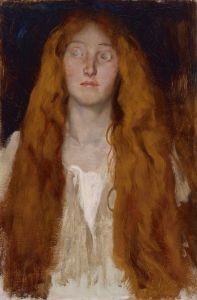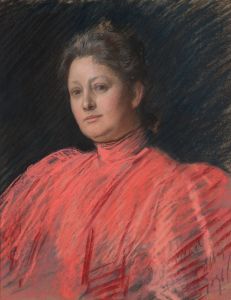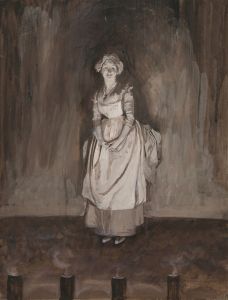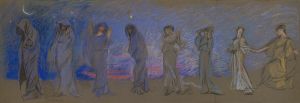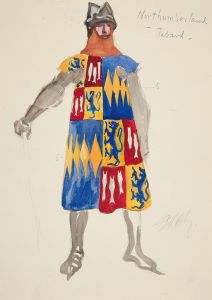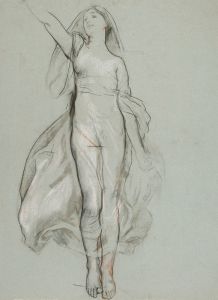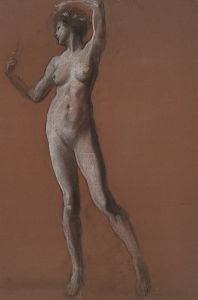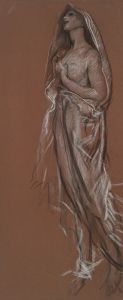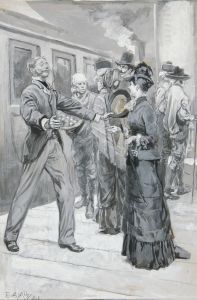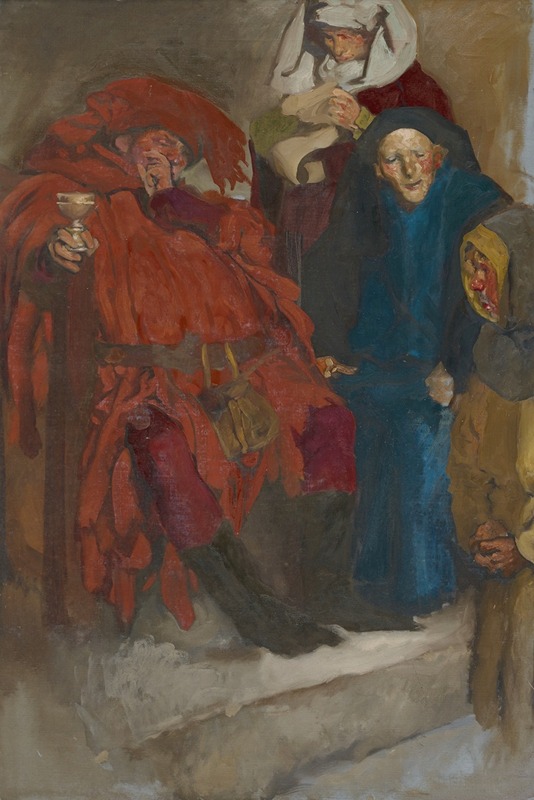
Compositional Study, possibly for The Merry Wives of Windsor
A hand-painted replica of Edwin Austin Abbey’s masterpiece Compositional Study, possibly for The Merry Wives of Windsor, meticulously crafted by professional artists to capture the true essence of the original. Each piece is created with museum-quality canvas and rare mineral pigments, carefully painted by experienced artists with delicate brushstrokes and rich, layered colors to perfectly recreate the texture of the original artwork. Unlike machine-printed reproductions, this hand-painted version brings the painting to life, infused with the artist’s emotions and skill in every stroke. Whether for personal collection or home decoration, it instantly elevates the artistic atmosphere of any space.
Edwin Austin Abbey's Compositional Study, possibly for The Merry Wives of Windsor is a preparatory artwork created by the American artist Edwin Austin Abbey (1852–1911). Abbey was a prominent illustrator and painter, known for his detailed and historically informed works, many of which were inspired by literature, particularly the plays of William Shakespeare. This compositional study is believed to be connected to his larger body of work based on Shakespeare's comedy The Merry Wives of Windsor.
Abbey had a long-standing interest in Shakespearean themes, and he dedicated much of his career to illustrating scenes from the playwright's works. His illustrations and paintings often captured the humor, drama, and intricate character interactions found in Shakespeare's plays. Abbey's attention to historical accuracy in costume and setting was a hallmark of his style, reflecting his deep research into Elizabethan and Jacobean periods.
The study itself is a preliminary work, likely created as part of Abbey's process of planning a larger, more finished composition. Such studies were common in Abbey's practice, as they allowed him to experiment with the arrangement of figures, gestures, and spatial relationships before committing to a final version. While the exact date of this study is not definitively documented, it would have been produced during the period when Abbey was actively working on Shakespearean subjects, particularly in the late 19th and early 20th centuries.
The Merry Wives of Windsor is one of Shakespeare's comedies, centered around the humorous misadventures of Sir John Falstaff and his attempts to court two married women, Mistress Ford and Mistress Page. Abbey's work related to this play often focused on its lively characters and comedic scenarios, capturing the spirit of the narrative through dynamic compositions and expressive figures.
The medium of this particular study is not specified in available records, but Abbey frequently worked in pencil, ink, and watercolor for his preparatory sketches. These materials allowed him to quickly develop ideas and refine his vision for more elaborate oil paintings or illustrations.
While the exact purpose or final outcome of this compositional study is not fully documented, it remains an example of Abbey's meticulous approach to his art and his dedication to bringing Shakespeare's works to life through visual storytelling. The study is part of Abbey's broader legacy as an artist who bridged the worlds of fine art and literary illustration, leaving a lasting impact on both fields.





